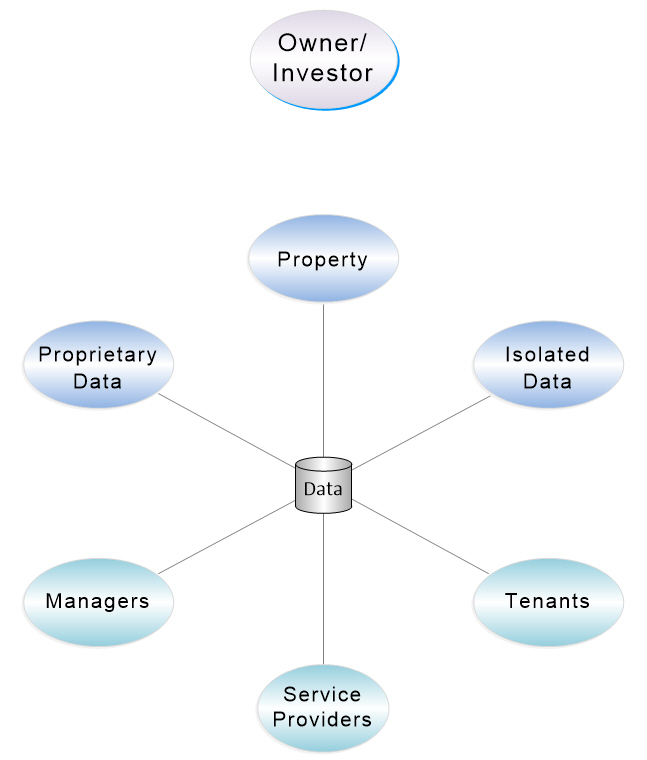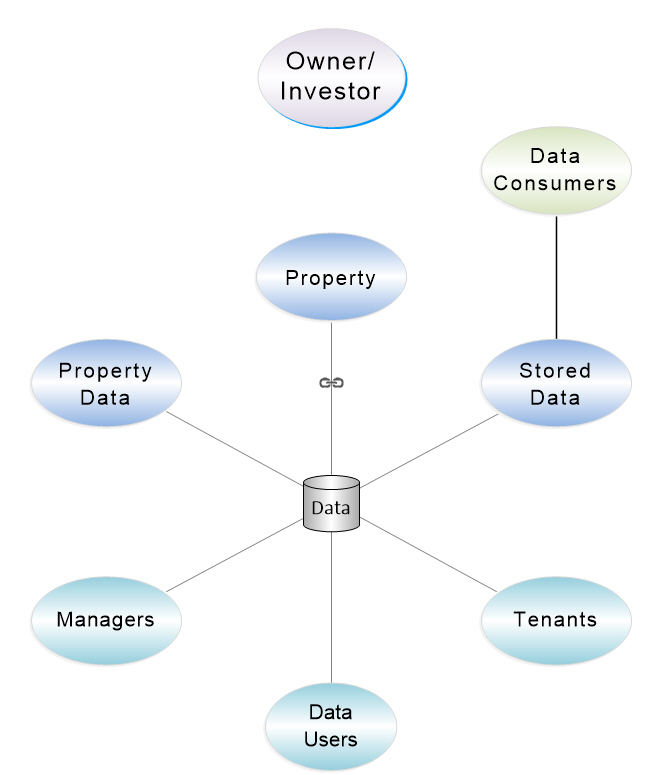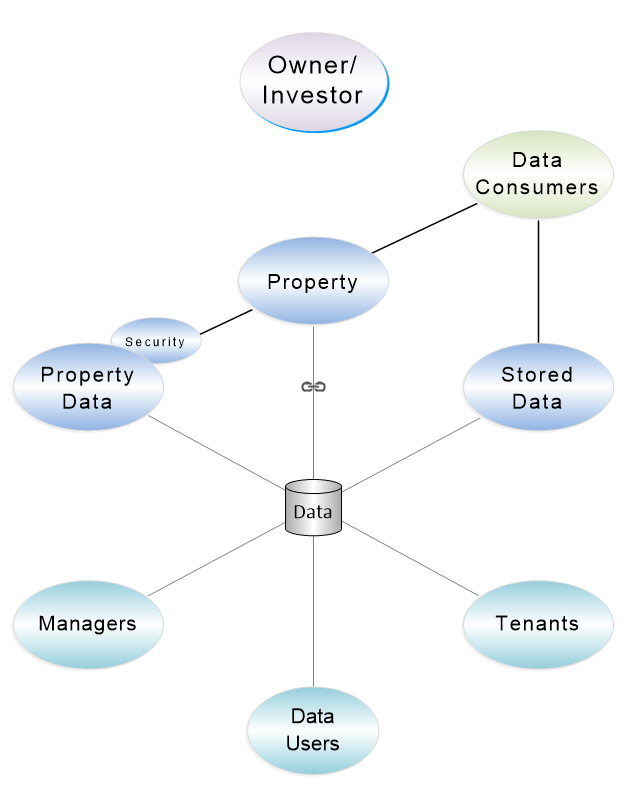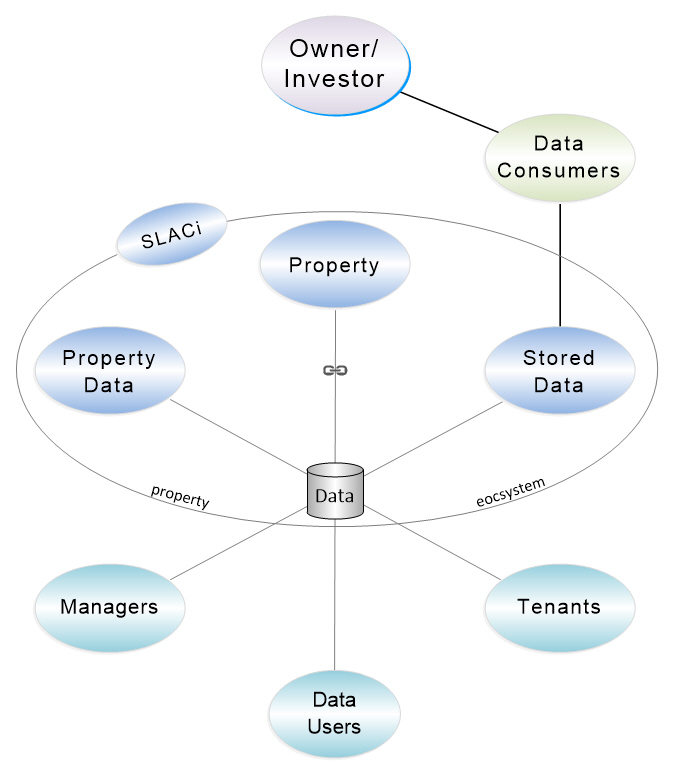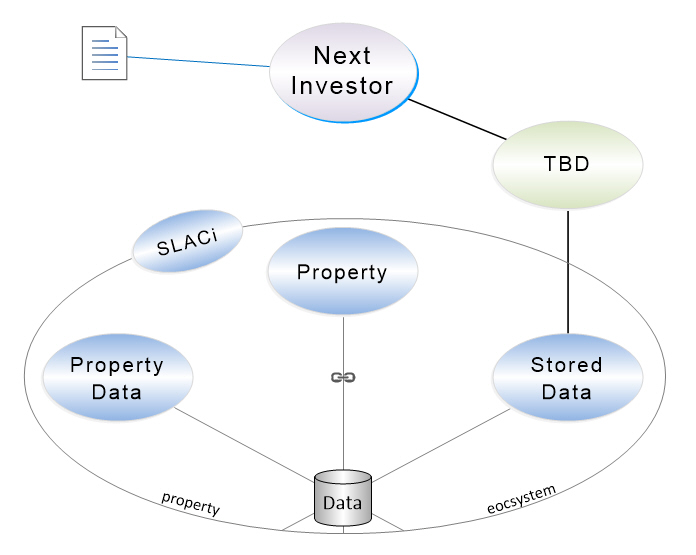Data Ownership
Digital Property Data Ecosystems
Proprietary Data
It’s common for property owners, investors, developers and AEC professionals to treat asset and business information as proprietary assets. However isolation creates a gap in the utility of information by users and technologies.
However, Management, Tenant and Service Provider processes branch into additional sequences of tasks involving build, operation and supply chains leading further into banking, finance and insurance segments where deliverables have direct relationships with the property and its service providers.
However, Management, Tenant and Service Provider processes branch into additional sequences of tasks involving build, operation and supply chains leading further into banking, finance and insurance segments where deliverables have direct relationships with the property and its service providers.
AI & Data Connectivity
Technology platforms that integrate processes flowing in and out of their immediate application environment can achieve substantial and sustainable improvements to property operation and industrywide user efficiency.
Property and industry data are critical components in the digital transformation of the real estate industry. AEC, management and other service providers also possess AI data critical to the data driven technology landscape of their respective industries.
Technology platforms that integrate processes flowing in and out of their immediate application environment can achieve substantial and sustainable improvements to property operation and industrywide user efficiency.
Markets and technology must recognize the role and value data plays in the development of technologies and AI capable of communicating within immediate industry segments and across sectors.
Property and industry data are critical components in the digital transformation of the real estate industry. AEC, management and other service providers also possess AI data critical to the data driven technology landscape of their respective industries.
Data Value & Risk
The important question today is who owns, accesses or uses property data and how?
Data is a valuable asset and the use of PropTech can unwittingly expose proprietary property and management data to outsiders.
Property owners, industry and service providers should consider all information as intellectual property. These details represent the data libraries emerging AI technologies will use to improve user and operational efficiency.
SLACi data APIs convert this private data into enterprise grade AI data libraries with secure access and exchange between diverse users and fragmented technologies.
The important question today is who owns, accesses or uses property data and how?
Data is a valuable asset and the use of PropTech can unwittingly expose proprietary property and management data to outsiders.
improve physical asset valuations
Property owners, industry and service providers should consider all information as intellectual property. These details represent the data libraries emerging AI technologies will use to improve user and operational efficiency.
SLACi data APIs convert this private data into enterprise grade AI data libraries with secure access and exchange between diverse users and fragmented technologies.
Property Data Ecosystem
Access management AI autonomously authenticates access and exchange between independent organizations, diverse users, fragmented technologies and private data sources distributed throughout the real estate industry.
Data APIs allow property owners and management, industry and supply chain organizations deploy private data as enterprise-grade AI data libraries.
Access management AI autonomously authenticates access and exchange between independent organizations, diverse users, fragmented technologies and private data sources distributed throughout the real estate industry.
Retained Value
CaPSCi – SLACi recognizes the physical asset as sovereign authority of digital asset data stored in the cloud under the oversight of current ownership. Data storage accounts and/or contents of the property AI data library transfer to new ownership upon sale or exchange of the asset.

